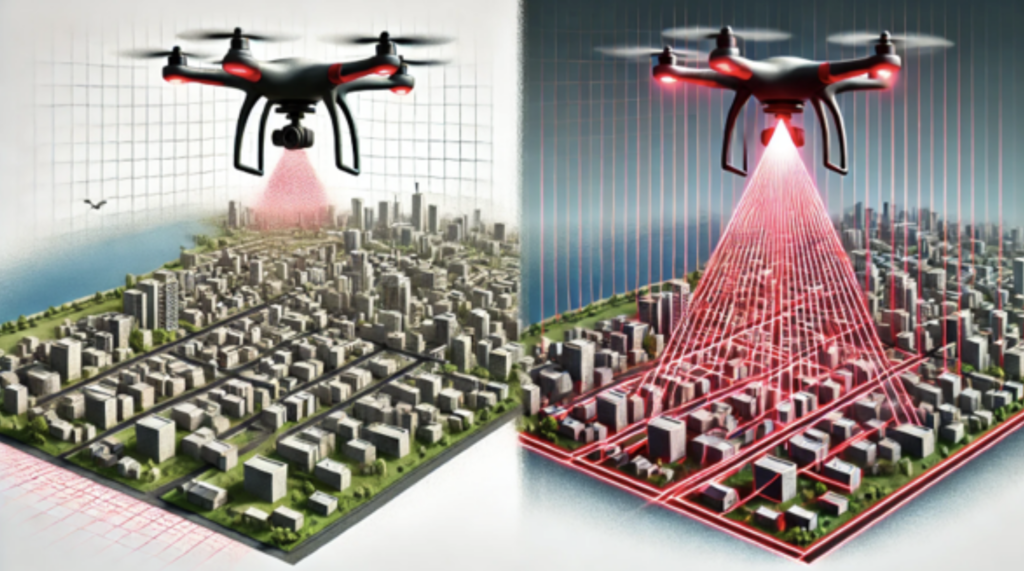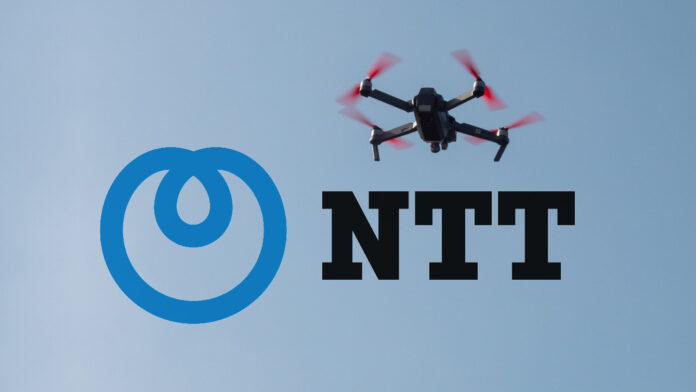In sum – what you need to know:
AI chip for edge devices – NTT enables real-time 4K video processing in drones at altitudes up to 150 meters, five times higher than conventional systems, while consuming under 20 watts of power.
2025 launch, expansion – new large-scale integration (LSI) tech from NTT will support apps from drone-based infrastructure inspections to photonics-based AI infrastructure deployments.
New AI ethics group – new NTT group will collaborate with Harvard, Princeton, and Stanford to study “black-box” nature of AI, combining physics, neuroscience, and psychology to define AI ethics and trust.
NTT Corporation has developed a ‘world-first’ AI chip technology to support high-power AI inferencing in low-power edge devices. Its initial use case is to boost edge computing in drone-mounted cameras for live beyond visual line-of-site (BVLOS) inspections. Standard AI video technology, where the compute engine is on the ground, limits the ‘real-time’ range of drone-based video monitoring to about 30 metres; NTT reckons it can extend this to an altitude of 150 metres, expanding the application and value of industrial drones in the process.
In the case of drones, its chip-based large-scale integration (LSI) technology supports on-board processing of 4K video streams, delivering footage at up to 30 frames per second at five-times higher altitude than conventional machine-vision setups. The legal altitude limit for drone flights in Japan is 150 metres, for example. NTT said it will commercialise its LSI technology this (fiscal) year (2025) via its photonics devices business, NTT Innovative Devices. It will develop further inference models and use cases, it said – including in data centre infrastructure.
NTT’s so-called Innovative Optical and Wireless Network (IOWN) initiative is built around photonic technology for ultra high-capacity, low-latency, and low-power AI applications – according to its marketing. The LSI architecture will inform edge-based AI projects in on-premise and private data centres. NTT’s research team, responsible for the project, is also working with integrator group NTT Data to use the same in relation to its proprietary attribute-based encryption (ABE) technologies – for “fine-grained access control and flexible policy setting at the data layer”.
Subscribe now to get the daily newsletter from RCR Wireless News
NTT Research stated: “[Drones] can detect individuals or objects from up to 150 metres above the ground, whereas conventional real-time AI video inferencing technology would limit… operations to about 30 metres. One use case includes advancing drone-based infrastructure inspection beyond an operator’s visual line of sight, reducing labour and costs… In edge and power-constrained terminals, AI devices are limited to power consumption an order of magnitude lower than that of GPUs used in AI servers – tens of watts compared to hundreds of watts.”
It went on: “The LSI overcomes these restraints by implementing an NTT-created AI inference engine. This engine reduces computational complexity while ensuring detection accuracy, improving computing efficiency using interframe correlation and dynamic bit-precision control. Executing the object detection algorithm You Only Look Once (YOLOv3) using this LSI is possible with a power consumption of less than 20 watts.”

Kazu Gomi, president and chief executive at NTT Research, said: “The combination of low-power AI inferencing with ultra-high-definition video holds an enormous amount of potential, from infrastructure inspection to public safety to live sporting events. NTT’s LSI, which we believe to be the first of its kind to achieve such results, represents an important step forward in enabling AI inference at the edge and for power-constrained terminals.”
Meanwhile, NTT Research has launched a new independent spin-off group from its Physics & Informatics (PHI) Lab, which has spearheaded NTT’s research into photonics-based computing since 2019, to understand the ‘black-box’ nature of AI – and how it is designed and trained, and made “safe and trustworthy”. As well, its goal is to develop “novel systems with drastically improved energy efficiency for computation”. The new Physics of Artificial Intelligence Group takes an interdisciplinary approach to AI, incorporating physics, neuroscience, and psychology – said NTT.
The point is to consider the ethics of AI, as well, with “fairness and safety” in mind. To these ends, it has three stated ‘missions’: to deepen the understanding of the mechanisms of AI “to integrate ethics from within, rather than through a patchwork of fine-tuning / enforced learning”; to borrow from experimental physics to create “systematically controllable spaces of AI and observe the learning and prediction behaviors of AI step-by-step”, and to “heal the breach of trust between AI and human operators through improved operations and data control”.
A statement said: “Issues of trustworthiness and safety have become critical to industry applications and governance of AI. [This group] aims to address similarities between biological and artificial intelligences, further unravel the complexities of AI mechanisms, and build trust that leads to more harmonious human and AI collaboration. This approach echoes what physicists have done for centuries: people understood objects move when forces are applied, but physics revealed the details of the relationship, which allowed humans to design the machines we know today.”
The new group will collaborate with scientists at the Harvard University Center for Brain Science (CBS) and Princeton University in the US, as the PHI Lab has so far. It will also collaborate with Stanford University. It will be led by Hidenori Tanaka, who led the PHI Lab’s intelligence systems group. Tanaka said: “The key for AI to exist harmoniously alongside humanity lies in its trustworthiness and how we approach the design and implementation of AI solutions. With this group, we have a path forward to understanding the computational mechanisms of the brain and how it relates to deep learning models.”

